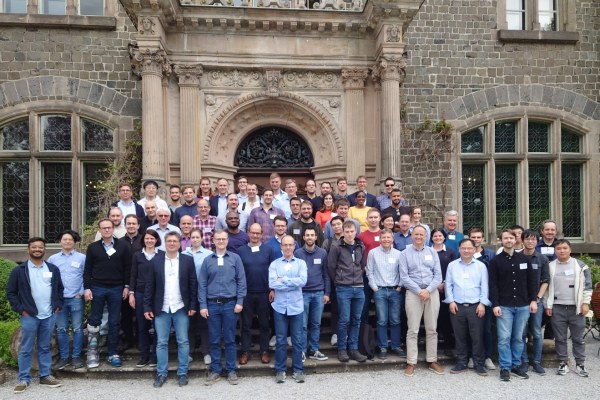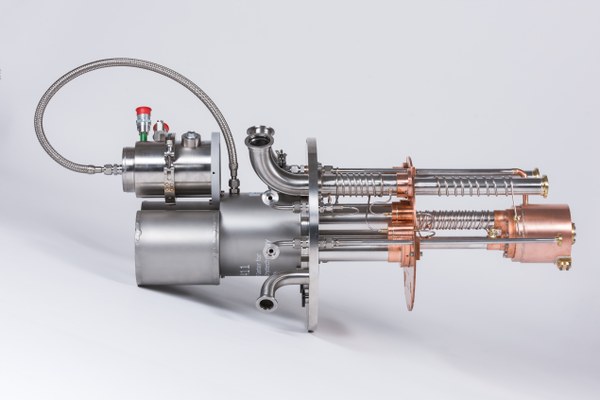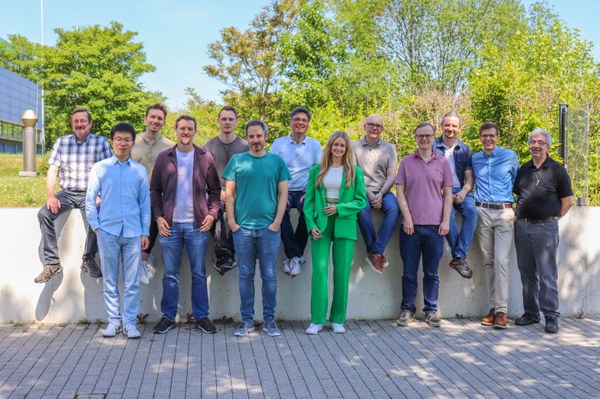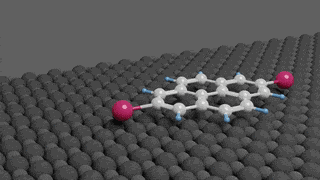AG Prof. Dr. Schirmeisen
- AG Prof. Dr. Schirmeisen - Neu
-
News
06/2023 Handmade Molecules: P3N3
On-surface synthesis was used to create the structurally elusive P3N3, an inorganic aromatic analogue of benzene. We report the preparation of this fleetingly existing species on Cu(111) and Au(111) surfaces at 5.2 K through molecular manipulation with unprecedented precision
05/2023 International Symposium of LOEWE Focus Project "PriOSS"
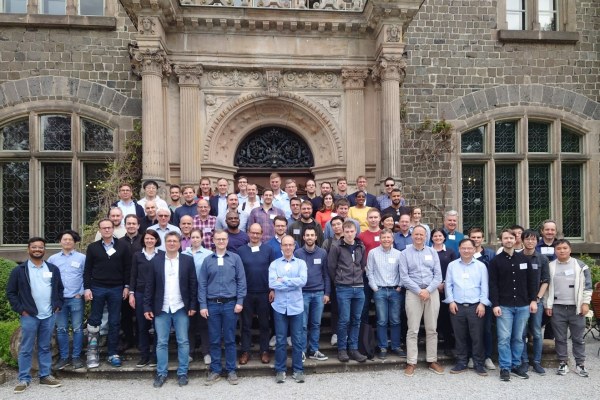
From May 8 to 10, 2023 the first international symposium of the LOEWE focus group PriOSS “Principles of On-Surface Synthesis” took place in Schloss Rauischholzhausen. During the three symposium days over 60 participants discussed their recent research results in the field of on-surface synthesis, which is a multidisciplinary field encompassing physicist, chemists as well as material scientists. New strategies for the design of new organic nanomaterials with unique properties as well as new characterization methods were presented.03/2022 "Bond imaging by torsional Eigenmode Force Microscopy"
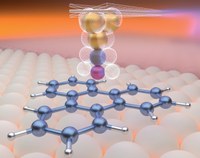
We analyzed the suitability of qPlus sensors, which are commonly used for such studies, for the application of modern multifrequency AFM techniques. Two different qPlus sensors were tested for submolecular resolution imaging via actuating torsional and flexural higher eigenmodes and via bimodal AFM. The torsional eigenmode of one of our sensors is perfectly suited for performing lateral force microscopy (LFM) with single bond resolution.
Artistic image was chosen to be cover image of the journal Nanoscale 14 (2022): D. Martin Jimenez et al., Nanoscale 14 (2022) 5329 (link to article)Blick ins Labor:
Neugierig wie es in den Laboren aussieht? Einen virtuellen Blick in die Labore der Arbeitsgruppe findet ihr hier:
VirtuellerRundgang09/2021 "Handmade Nanoarchitectures":
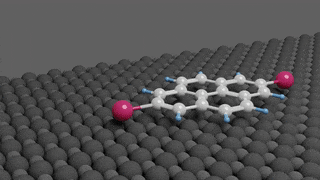
In a recent paper in Nature Chemistry we show how to build nanostructures using individual organic molecules one by one with an atomic force microscope. This opens the path to prototyping of new molecules structures, otherwise impossible to fabricate.
Q. Zhong, A. Ihle, S. Ahlers, H.A. Wegner, A. Schirmeisen, D. Ebeling "Constructing covalent organic nanoarchitectures molecule by molecule via scanning probe manipulation" Nature Chemistry (2021) (link to article)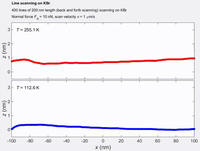
More details in W. Wang, D. Dietzel and A. Schirmeisen "Thermal Activation of Nanoscale Wear", Physical Review Letters 126 (2021) 196101 (link to article)12/2020 "PriOSS":

LOEWE Focus project "PriOSS - principles of on-surface synthesis" is funded by the state of Hesse from 2021 to 2024 with 4.2 Mio EUR, with 8 partners from the universities of Giessen and Marburg. Goal is the decryption of molecular mechanisms that underly on-surface reaction processes of organic molecules.03/2020 "Superconductivity meets Nanofriction": Superconductivity is well-known to change electric resistance to zero, but why shoud it have any influence on friction? Our recent work in Science Advances shows that the sliding friction of a nanocontact on a BSCCO is reduced by 20% when crossing the superconductivity transition temperature. Friction is a complex superposition of different contribution, here we can pinpoint electronic friction to play a sizeable role.

W. Wang, D. Dietzel and A. Schirmeisen "Single-asperity sliding friction across the superconducting phase transition", Science Advances 6 (2020) eaay0165 (link to article)10/2019 "Elusive cousins of graphene": In a cooperation with the Universities of Marburg, Oldenburg and Erlangen-Nürnberg a new 2D graphene allotrope was created by on-surface synthesis techniques. This material contains odd-numbered rings, and is predicted to possess unusual (opto)electronic properties. See also feature article in Nature Research Highlights.
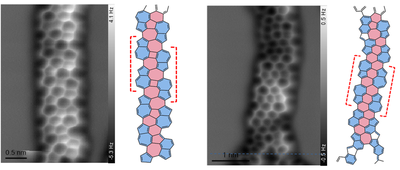
Q. Fan, D. Martin-Jiminez, D. Ebeling, C.K. Krug, L. Brechmann, C. Kohlmeyer, G. Hilt, W. Hieringer, A. Schirmeisen, and J. M. Gottfried "Nanoribbons with Non-Alternant Topology from Fusionof Polyazulene: Carbon Allotropes Beyond Graphene", JACS 141 (2019) 17713 (link to article)5/2019 "3D Imaging of Molecular Bonds":
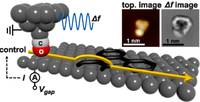
News coverage: APS Physics viewpoint, Nature Research Highlights, Physics World2/2019: Selectivity is a key parameter for building customized organic nanostructures via bottom-up approaches. Therefore, strategies are needed, which allow connecting molecular entities at a specific stage of the assembly process in a chemoselective manner. Studying the mechanisms of such reactions is the key to apply these transformations for the build-up of organic nanostructures. In a collaboration with Prof. Wegner (JLU), Prof. Mollenhauer (JLU) and Prof. Chi (Soochow University, China) we show the selective dehalogenation of 4-bromo-3-iodo-p-terphenyl on the Cu(111) surface using bond imaging atomic force microscopy.
 D. Ebeling et al. "Adsorption Structure of Mono- and Diradicals on a Cu(111) Surface: Chemoselective Dehalogenation of 4-Bromo-3''-iodo-p-terphenyl", ACS Nano 13 (2019) 324
D. Ebeling et al. "Adsorption Structure of Mono- and Diradicals on a Cu(111) Surface: Chemoselective Dehalogenation of 4-Bromo-3''-iodo-p-terphenyl", ACS Nano 13 (2019) 32412/2018: New 3-year DFG project granted, which aims to unravel the "Molecular mechanisms of C-C coupling: A microscopic view into the on-surface chemical bonding processes". This is an interdisciplinary joint project together with Prof. Herman Wegner (organic chemistry, JLU) and Prof. Doreen Mollenhauer (physical chemistry, JLU).

8/2018: Site-selective functionalization of only one of two identical chemical groups within one molecule is highly challenging, which hinders the production of complex organic macromolecules. In cooperation with Prof. Lifeng Chi's group at Soochow University, China, we demonstrate that adsorption of 4,4″-diamino-p-terphenyl on a metal surface leads to a dissymmetric binding affinity. With low temperature atomic force microscopy, using CO-tip functionalization, we reveal the asymmetric adsorption geometries of 4,4″-diamino-p-terphenyl on Cu(111), while on Au(111) the symmetry is retained.
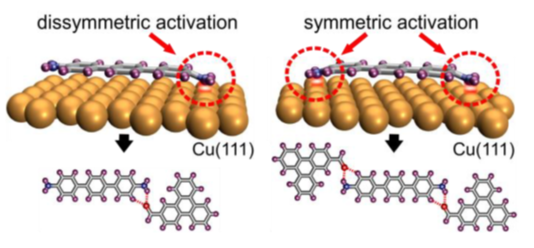 For details see article: Q. Zhong, D. Ebeling, J. Tschakert, Y. Gao, D. Bao, S. Du, C. Li, L. Chi, A. Schirmeisen, "Symmetry breakdown of 4,4″-diamino-p-terphenyl on a Cu(111) surface by lattice mismatch" Nature Communications 9 (2018) 3277 (link to article)
For details see article: Q. Zhong, D. Ebeling, J. Tschakert, Y. Gao, D. Bao, S. Du, C. Li, L. Chi, A. Schirmeisen, "Symmetry breakdown of 4,4″-diamino-p-terphenyl on a Cu(111) surface by lattice mismatch" Nature Communications 9 (2018) 3277 (link to article)

